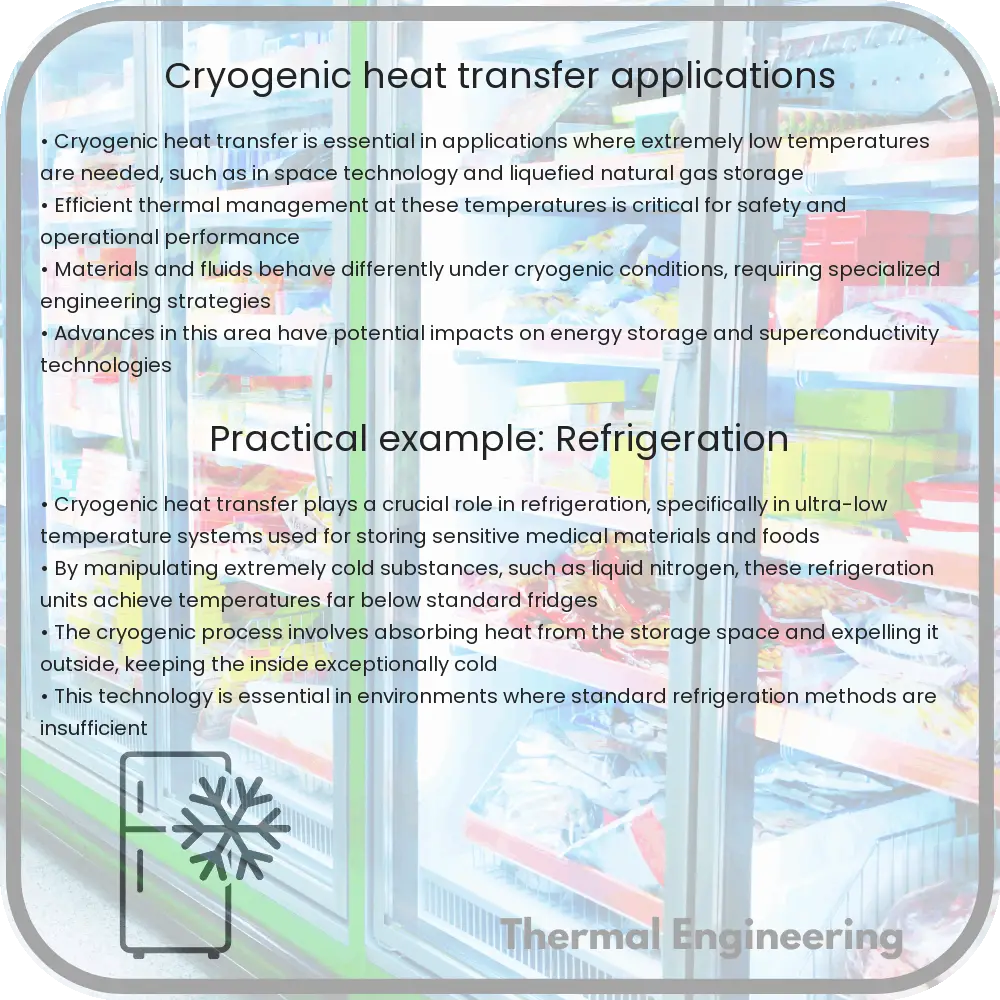Explore the essentials of cryogenic heat transfer, focusing on its principles, applications, and challenges in industries like LNG production and space exploration.

Introduction to Cryogenic Heat Transfer Applications
Cryogenic heat transfer involves the study and management of thermal energy at very low temperatures, typically below -150°C (-238°F). This field is crucial in the design and optimization of systems where such low temperatures are required, including space applications, medical preservation systems, and liquefied natural gas (LNG) processing.
Key Principles of Cryogenic Heat Transfer
The basic concepts of cryogenic heat transfer are similar to those at higher temperatures but are complicated by the unique behaviors of materials and fluids at low temperatures. The cryogenic regime often involves the consideration of thermal conductivity, specific heat, and convection principles that diverge significantly from those observed at ambient conditions.
Applications of Cryogenic Heat Transfer
- Liquefied Natural Gas Production: LNG processing involves cooling natural gas to about -162°C (-260°F), turning it into a liquid form for easier storage and transport. Effective heat transfer designs ensure safety and efficiency in cooling and maintaining this low temperature.
- Superconductivity: Some materials exhibit superconductivity at cryogenic temperatures. Efficient heat transfer systems are essential in maintaining the low temperatures necessary for superconductors used in medical imaging equipment and quantum computers.
- Space Exploration: The outer space environment has extreme temperatures. Satellites and space vehicles require sophisticated cryogenic heat transfer systems to protect sensitive instruments and maintain operational temperatures.
Challenges in Cryogenic Heat Transfer
Designing heat transfer systems for cryogenic applications presents numerous challenges, including:
- Material Selection: Materials can become brittle or change thermal conductivity properties at low temperatures. Engineers must carefully choose materials that maintain structural integrity and desirable thermal properties under these conditions.
- Frost Formation: Ice or frost may form on cold surfaces, affecting system performance. Managing or mitigating frosting is critical for maintaining efficiency.
- Thermal Insulation: Preventing heat ingress is crucial to maintaining low temperatures. Effective thermal insulation solutions are essential, often involving advanced materials and technologies.
Future Directions
As the demand for advanced cryogenic systems grows, especially in the fields of renewable energy and quantum technologies, the development of more efficient and robust heat transfer methods will be critical. This includes innovations in nano-scale materials science and enhanced computational models for heat transfer simulations.
The field of cryogenic heat transfer is vital for various high-tech industries, reflecting the ongoing need for innovation and adaptation in engineering practices to meet the challenges of extreme environments.